5 Great Plants for Borders and Screens
I love deciduous shrubs (please don't call them bushes). I enjoy their ease of maintenance and architectural forms — and many, like Viburnum and chokeberry and ninebark, flower, have ornamental fruit, feed wildlife and offer great fall color. But shrubs are almost too easy. It's taken me years to discover herbaceous perennials — plants that die back and come up from the ground every year — which can do the same work as a good shrub but in much less time. A side benefit is that their flowers tend to attract a greater diversity of winged pollinating insects. These shrub-like perennials may take three to four years to mature to full size, but that's much quicker than the usual 10 years a deciduous shrub takes. You can use them in place of shrubs to soften the corner of a patio or building, along fences for spring-to-fall privacy and as sculptural elements in garden beds. Are you ready to ride the herbaceous perennial wave?
Fall is the best time to plant and plan ahead for the following year; planting is easier on you and the plants in the cooler weather, and you give the perennials a head start to grow bigger by summer. So let me show you two fall bloomers, a spring bloomer and two for summer.
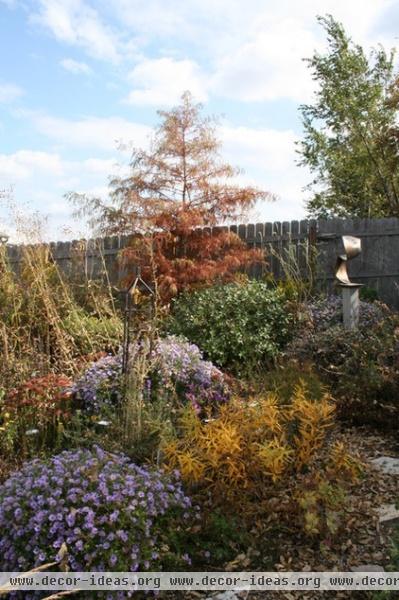
See those low, blue-flowering mounds? They're aromatic aster (Symphyotrichum oblongifolium) — native from the Rockies to most of the East Coast. This perennial shrugs off many hard freezes with gusto while still blooming into early November.
A lover of sun to partial sun and dry soil, it will bring in the last of the pollinating insects every autumn. Reaching no more than 2 feet tall and about 3 to 4 feet wide after a few years, this aster is a front-of-the-border showstopper that's truly low maintenance.
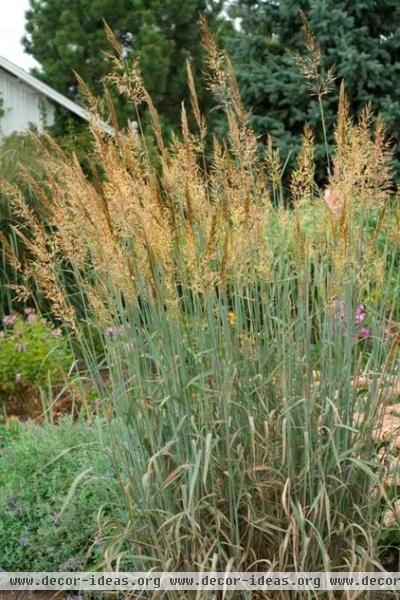
OK, I'm cheating with a grass. Sort of. But since we often use shrubs as screens, why can't we also use perennials? And why not the easiest of them among grasses?
Here's Indian grass (Sorghastrum nutans), native to all areas in the U.S. but the West Coast. It gets about 5 to 6 feet tall when flowering and 3 feet wide. Drought tolerant once established, it is pretty adaptable to soil but likes full sun. It gets superb orange fall color, stays perfectly erect in winter snows and shelters birds during storms.
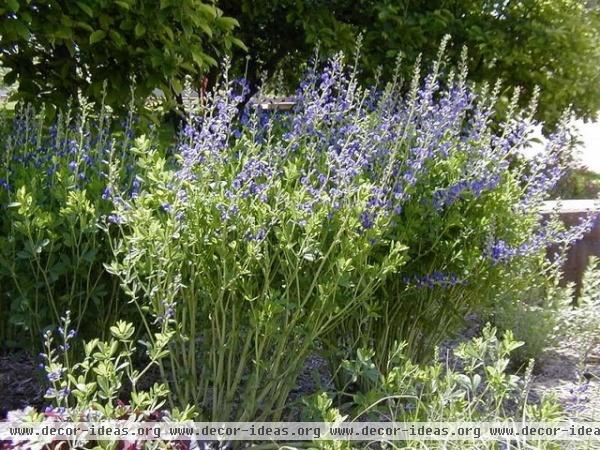
My third perennial-as-shrub suggestion is blue wild indigo, of which there are many species. The one here is Baptisia australis, which tends to be the biggest, at 3 feet tall and wide.
Blooming in May for several weeks and native from the Central Plains to the U.S. East Coast, Baptisia prefers full sun and dry soil — in fact, its taproot is 6 to 8 feet deep, so plant it in its forever home, because it hates being moved. While it's in bloom, massive queen bumblebees flock to this early nectar and pollen source as they begin raising their first broods.
Other species include the moist-tolerant Baptisia alba and the dwarf Baptisia minor. There are also now several cultivars of B. australis with various bloom colors.
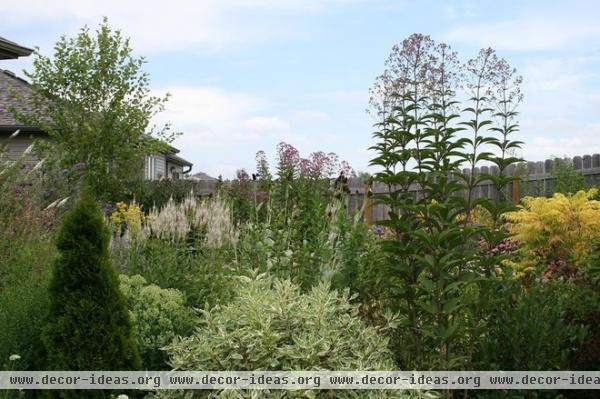
Looking for something that shoots up into the sky but doesn't get too wide and sprawly? Try Joe Pye Weed (Eupatorium purpureum and E. fisutlosum), which gets 6 to 8 feet tall and 2 to 3 feet wide. Both varieties are native from the Midwest to the East Coast. Sure, it may take two to three years to see these sizes, but a shrub might take 5 to 10 years.
Joe Pye Weed prefers a medium to moist soil in full sun, though there are reports of E. purpureum's working in shade while being smaller and flowering less. Butterflies flock to the mid- to late-summer blooms, and birds love perching on the tall stems in winter. (Don't cut it down until early spring, especially if you live in snowy areas — this will help it overwinter better.)
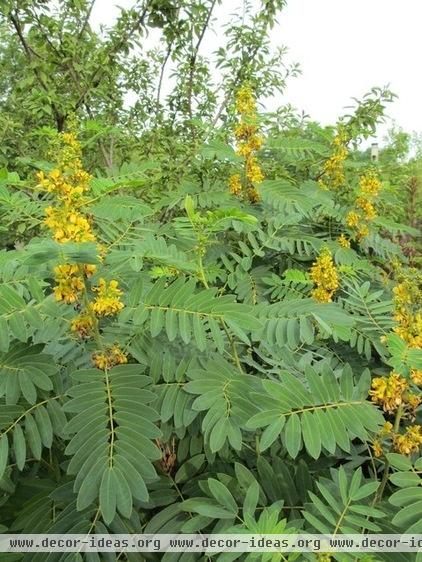
Another mid- to late-summer bloomer is wild senna (Senna hebecarpa), which is native from the central Midwest (Illinois, Wisconsin and down South) to the East Coast.
Liking full sun and medium to moist soil, this champ blooms and blooms and blooms for well over a month when most other summer flowers have sizzled away. Every morning this past summer, I went outside and could hear wild senna from 20 feet away — that's how loud the dozens of bumblebees were as they buzzed around pollinating the flowers. In September the long, fuzzy seed heads emerge, and by October they turn black and create great ornamental interest. Senna is a great accent plant to use in the middle of a border or to soften a hard edge.
Please let me know what you think about my choices, then share any suggestions for perennials that can do the work of shrubs. How do you use them in your designed landscape?
More: 8 Perennials for Great Fall Color












